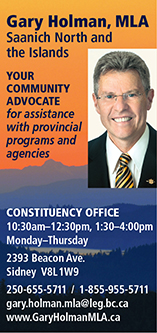Archive for March 2015

Hard-Hitting News – Roller Derby in the Capital Region
by Michele Murphy, photo by Bonner Photography
Roller derby divas Eves of Destructions’ ninth season kicks off this month with their all-star A team facing heavy-hitter Abbotsford team the Anarchy Angels. The Eves promise an exciting bout showcasing the skill and the passion of this intense event. Four-year derby veteran Esther Beauregard, or by her derby name, C-3Ph0 (Ho for short), says that this season will be their best yet.
“We’re thinking that his will be a break-out year for the A Team,” says Ho. “We’ll be facing some really tough competition this season which will really showcase our talent. You’re going to see a level derby here on the Island that we haven’t seen before.”
The Eves of Destruction is a club of passionate amateur all-female derbyists from all over the Capital Region. They practice throughout the region, with their bouts taking place in Esquimalt and Langford.
All-female roller derby has been around since the 1930s, with it’s heyday in the 1940s when it was played on a banked track to large audiences in more than 50 cities across the US. The sport eventually evolved (devolved?) into a form of sports entertainment using colourful player names, costumes, developed characters, dramatized rivalries, and somewhat or completely scripted bouts. By the ‘60s it had settled into the sports and entertainment fringes, losing the mass appeal it once enjoyed.
Until 2001.
Derby was reborn just after the turn of this century in Austin, Texas (city motto, “Keep Austin Weird”). The sport of it was back with a new focus on athletics and strategy. Today, modern roller derby is played internationally on a flat track. The slightly slower track makes it possible to play in any community that has a solid gym floor, a hockey or curling rink, and spectator demand. The sport is still dominated by all-female adult amateur teams, but male, co-ed and youth teams are on the rise. Flat-track derby was even considered as a roller sport for the 2020 Olympics. While the colourful names and interesting uniforms remain, strategy and athletic ability have replaced the scripted theatrics.
With the Eves’ focus on skill and safety, hitting the track as a full-on player doesn’t happen overnight.
“There’s a lot to think about in modern derby,” explains Ho, “it’s not just a physical game, it’s a mental one too. Modern derby involves strategy. You need to understand the plays, and your role in the line, and you need to play by the rules. It takes a while to get the hang of it – whether you’re a player or a spectator.”
For the spectators there’s a run-down of how the game is played at the beginning of every game, complete with non-playing players in the audience to answer your questions throughout the bout.
For the players there’s a very structured graduated training process that starts at skating basics and goes right up to the all-star team, appropriately named the A Team. The focus is on safety and skill building and they say that no one is put on the track before they are both physically and mentally ready. Derby is open to all adult females. “We have women from 18 right through to their mid 50s joining,” says Ho. “Derby not a place that you come to get in shape though; you need to be in shape to play.”
But for the players, derby is more than just a sport, it’s personal. “My derby team is family,” said third-year, 46-year-old Saanich player Shannon Pfaffenberger, whose derby name is Pfury S Pfaff. “We’re together a lot – usually two and three times a week. No matter what’s happening in your outside life, it all goes away when you’re at derby. The girls know you, they really get you, you have a shared love and respect for the sport and your team,” she explains. “We rely on each other, on and off the track.
""
“These are strong, passionate women that I play with. The word inspiring comes to mind,”Pfaffenberger says,. “It’s the best sport that I have ever played.”
Eves’ season opener is at Archie Browning Centre on April 25th at 6 pm.
For more info visit: www.evesofdestruction.com

Bringing Italy to Prospect Lake
Stefano & Melissa Mosi return home to Saanich
by Michele Murphy
Mosi Bakery Café opened its doors to an eager line-up on a sunny morning in February and owners Stefano and Melissa Mosi couldn’t be more pleased. “We were busy all day,” says an excited Melissa. “Everyone was really receptive, we were pleasantly surprised by the warm reception.”
While the Mosis may have been surprised by the eagerness of their Prospect Lake neighbours, the young couple are hardly strangers to warm Saanich welcomes.
The Mosis are probably best known as the founders of La Collina , a popular Italian bakery, café and gelato outlet that they started in an unassuming building on Cedar Hill Road in 1997. La Collina had grown to three shops by the time the couple sold their share in 2005 and headed to Maui. There they opened the island’s first gelato shop, Ono’s. The Mosis have returned home now, and have just opened up another bakery in the old Prospect Lake General Store building at the corner of Spartan and West Saanich Rd. SVO caught up with Stefano on opening week to find out more about their new endeavour. Here’s what he told us:
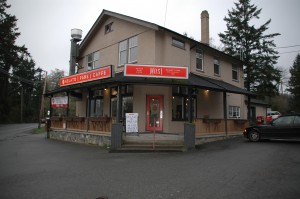
What made you decide to come home?
Our family all live in Victoria and while we were living in Maui we adopted a baby girl which made travelling to see them very hard (Maui is a six-hour flight). Once our daughter got her Canadian citizenship we sold our gelato shop and moved back to Victoria to be closer to them. Also living in the States is a difficult transition from Canada in terms of health care and not being able to vote.
Why now?
As soon as we moved home last May we started to search for our next business. We looked at lots of different areas but the West Saanich location came available in December and the owners of the 101-year-old building are family friends, Rick and Brenda Mitchelmore. It was good timing.
Why this location – and why do you expect to succeed in this location while others haven’t been quite so fortunate?
It’s true that past businesses have had trouble in this location, but we are providing a different service than those in the past. The West Saanich heritage building has been an integral part of the community at many different points in its history; from a post office, to Chinese corner store. It was always a meeting point for the community. Twelve hundred cars pass by here daily on their way to and from work servicing the Peninsula. As well, the number of cyclists on the Interurban Rail Trail on the weekend is staggering.
Our business concept is an on-site bakery-café and gelateria. I have heard from countless residents that they are so glad that we have come to the area and want to help support our endeavour.
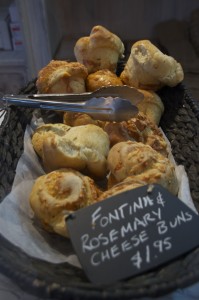 What does Mosi’s offer?
What does Mosi’s offer?
We have a full in-house bakery which includes artisan breads, baked goods like brioche, salted caramel cinnamon buns, ham & cheese croissants, and cannoli. We make our gelato freshly churned and offer 10 flavours daily that are displayed in an old-fashioned gelato case, like the one my grandfather used in Italy in the 1920s (of course he used ice back then instead of electricity.)
We have a breakfast menu with Eggs Benny Italian style, country breakfast, bakery toast, and locally roasted Drumroaster coffee. Lunch is an array of bakery bread sandwiches served hot and cold. Our specialty is an Italian grilled cheese with melted Fontina. We make soup daily in house. We also have a full espresso bar. Our liquor licence is in process, so we hope to offer a selection of local craft beer, cider and wine.
Is your business just retail or will you be selling wholesale as well?
One thing that we have learned from our growth and expansion with La Collina is that we need to stay with one location and focus on retail. La Collina had grown to five retail locations and was the largest artisan wholesaler on the Island at the time. We sold to BC Ferries and Thrifty Foods, with more than 100 employees; it was too much growth in too short a period of time. We ultimately sold our shares to our then-partners Alex Campbell, Jr. and Jeff Sims and pursued our gelato shop idea in Maui.
What are your plans for the future of Mosi’s?
Our plan is to strive for a balance of work/life, to enjoy our daughter Sofia and our family. Our plan, keep it small and focused, have great employees and pay them a living wage, and provide great baked goods and food for the community.
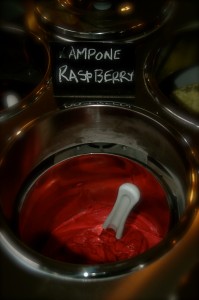 What’s the one thing that you really want SVO readers to know about Mosi’s?
What’s the one thing that you really want SVO readers to know about Mosi’s?
I’d like the readers to know just how much we really appreciate their support, and what a difference it can make when the community comes together to support a worthwhile business.
We plan to work with local farmers like the Red Damsel farm down the street. They grow amazing fruit in the summer months and we can’t wait to make fresh gelato with their strawberries and other fruit! Our name, Mosi Bakery, is paying homage to my grandmother on my father’s side who owned a pasticceria in Viareggio, Italy in the 1920s called Mosi as well. You can see a photo hanging in our shop.
www.mosibakery.com

Regional Collaboration – a work in progress
An update on governance/amalgamation – for the latest updates – scroll to the bottom of the article
by Roger Stonebanks
Victoria city council has moved to bring to a head the issue of a provincial study of amalgamation or governance in Greater Victoria.
At a council meeting on Feb. 12, Mayor Lisa Helps was “directed” to “write and meet” Community Development Minister Coralee Oakes “requesting that the province undertake a study on regional governance” based on 10 guidelines headed “Capital Region Amalgamation Study.”
The guidelines include: the study team must report to the Minister of Community Development in a timely manner, must include all municipal agencies and First Nations in the Capital Region, “recommend changes to achieve good municipal governance across the region” and include more than one option for municipal boundaries. The complete guidelines are available on the City of Victoria website.
Voters in North Saanich and Sidney supported an amalgamation study – and Central Saanich supported a cost-benefit analysis – but restricted to the three peninsula municipalities – and only for the province to fund the study. Saanich voters supported a “governance review” (the word “amalgamation” was not mentioned) by Saanich – specifically, “Do you support Council initiating a community-based review of the governance structure and policies within Saanich and our partnerships within the Region?” Council is waiting for a staff report before starting its governance review.
North Saanich Mayor Alice Finall told SVO that there was “some willingness” between North Saanich and Central Saanich “to pursue a joint effort to obtain funding from the province for this study (to be done by the municipalities).” She expected individual peninsula municipal councils “will make their own decisions as to how each will proceed.”
Elsewhere in the region – voters in Victoria and Langford (by 1 percent, or 13 votes) were for amalgamation; Esquimalt voted in favour of exploring it; Oak Bay was against; and View Royal, Colwood, Metchosin, Highlands, and Sooke did not hold votes.
At the provincial level, Community Development Minister Coralee Oakes said before the election, “For those communities who are interested in continuing to examine governance structures, following the election results I will make ministry staff available to provide necessary resources and support.”
After the election, Oakes posted a statement on Nov. 17, 2014, on the Community Development Ministry website which included the comment, “I remain committed to provide the support and resources required by the newly-elected local governments, once they have had an opportunity to discuss and review the results in greater detail.”
Also on Nov. 17, 2014, she told reporters (Victoria Times Colonist, Nov. 18, 2014), “We will be doing a governance study. It’s going to be hard work. It’s going to be complex. It’s going to be very, very difficult, but we’re committed to doing that.”
Under BC legislation, amalgamation requires affirmative public votes within the affected municipalities and cannot be forced.
Further to this article:
SVO asked the ministry if it would go on record confirming or denying Coralee Oakes, Minister of Community, Sport and Cultural Development’s apparent statement to the Times Colonist on Nov 17, 2014, that it “will be doing a governance study.” This is the response that SVO received:
“The ministry is in the process of considering how best to proceed. As the referenda questions were quite mixed, it is important for citizens that governments think broadly about governance and services in the region.
Knowing what conversations are occurring in the community and among local governments is an important part of these considerations.
Decisions about potential next steps in terms of a study will come out of the Province’s considerations and future discussions between local governments and the Province.”
UPDATE – March 11, 2015
SIDNEY SAYS NO TO TRI-COUNCIL PARTICIPATION ON AMALGAMATION STUDY FUNDING REQUEST
A decision by Sidney council – by a single vote – on the subject of a study of amalgamation of the three peninsula municipalities has resulted in some confusion over the issue.
The minutes of Sidney council’s decision on Feb. 23, arising from an earlier tri-council meeting recommending creation of a committee to secure funding from the BC government for an amalgamation study, resulted in this 4-to-3 decision by council – “that Council deny Sidney’s participation in the creation of a Mayors Task Force and deny Sidney’s mayor participating in approaching Minister (of Community Development) Coralee Oakes with regards to funding and setting out a plan of study.” The motion was supported by Mayor Steve Price and Couns. Tim Chad, Mervyn Lougher-Goodey and Cam McLellan. Opposed were Couns. Erin Bremner, Barbara Fallot and Peter Wainwright.
Mayor Price told Saanich Voice Online in a statement that his council’s decision “is being taken out of context and council fully supports our residents’ request for an amalgamation study being conducted by the Province and looks forward to the Minister’s review of good governance in the capital region.
“The majority of council simply resolved to deny North Saanich’s request to form a Mayor’s Task force and that we weren’t prepared to approach Minister Oakes with respect to advising them how to go about their study – that’s up to the Province to determine and we can then comment once they’re developed their Terms of Reference, which was made perfectly clear to all at the tri-municipal meeting.”
Last November, Sidney residents voted “Yes” (2,566 to 1,232) in a non-binding referendum to this question, “Are you in favour of a provincially funded study to investigate the feasibility, costs and implications of amalgamating the three municipalities of the Saanich peninsula?”
Mayor Price’s comments left Central Saanich Mayor Ryan Windsor saying there was no suggested “task force” but rather that the three peninsula mayors should meet Oakes following the referendums last November. His commitment remained what voters in Central Saanich approved (3,588 to 1,489), “Should the District of Central Saanich petition the Province to fund a cost/benefit analysis of an amalgamation of Central Saanich, North Saanich and Sidney.”
He said Sidney council’s decision “leaves a lot of room for speculation” and he found it “bizarre” that Sidney did not want to approach Oakes with Central Saanich and North Saanich. “If Sidney wants to exclude themselves . . it seems an odd move.” The next step should be for the three mayors to meet Oakes and not wait for the province, said Windsor.
Mayor Alice Finall of North Saanich has not been available for comment.
The next meetings of Central Saanich and North Saanich councils are on March 16.
-30-
UPDATE – March 12, 2015
MINISTER CORALEE OAKES SPEAKS TO A PRIVATE AUDIENCE ON AMALGAMATION/GOVERNANCE
Community Development Minister Coralee Oakes says the provincial government has put money aside for a study of amalgamation/governance in Greater Victoria.
But she stressed at a breakfast meeting on March 10 of the Victoria-Swan Lake BC Liberal Association that she cannot dictate what the study will look like and she needs to hear from local governments – specifically mentioning she has only heard from the City of Victoria (see lead post). Oakes spoke and answered questions for 36 minutes.
Here is an audio file of that presentation, posted this week on the Amalgamation Yes website:
Coralee Oakes, Minister of Community, Sport & Cultural Development on Amalgamation at March 10, 2015
https://soundcloud.com/user776628093/coralee-oakes-minister-of?utm_source=soundcloud&utm_campaign=share&utm_medium=email
Or on DropBox
-30-
March 15, 2015
FURTHER AMALGAMATION UPDATES
Progress on studying the possible amalgamation of the three Saanich Peninsula municipalities has, effectively, stalled for now. Here are the positions of the three municipal councils, in their words, as shown in recently posted minutes:
NORTH SAANICH – Council said the mayors of North Saanich and Central Saanich should approach Community Development Minister Coralee Oakes “with regard to funding and setting out terms of an amalgamation study.”
SIDNEY – Council voted to “deny Sidney’s participation in the creation of a Mayor’s Task Force and deny Sidney’s Mayor participating in approaching Minister Coralee Oakes with regards to funding and setting out a plan of study.” Mayor Steve Price added in his letter to the other councils – “Council supports our residents request for an amalgamation study and looks forward to the Minister’s review of good governance in the capital region.”
CENTRAL SAANICH – Council decided, “That the matter of the amalgamation study be referred to a future committee discussion regarding the parameters of the study.”
-30-
More updates to follow
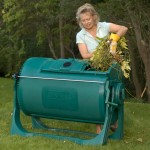
Out of Sight, Out of Mind – Two Ways to Recycle Kitchen Scraps
Effective January 1, 2015 kitchen scraps were banned from Hartland landfill. The Regional Kitchen Scraps Strategy was developed by the Capital Regional District (CRD) to promote sustainable waste management for the region. As a result, all residences and businesses in the region are required to segregate food scraps from regular garbage.
The CRD estimates that organic material, such as kitchen scraps, constitute approximately 30% of the waste at the landfill. Current recycling programs are diverting 46% of the waste stream from the landfill, and a goal of 70% is envisioned by diversion of kitchen scraps.
Sidney and Saanich are both directed by municipal services and included in property taxes while residents of North, and Central Saanich rely on private companies for collection. In those areas, there are at least two companies that pickup kitchen scraps separately from regular garbage: Pan-Insula Disposal (Pan-D), and Capital City Recycling (CCR). Waste Management also has a local service pick-up but does not accept the separate organic material, according to their service agent. Repeated attempts to contact BFI Canada failed. Both Pan-D and CCR charge nearly the same for regular garbage pickup, $52 for three months, per can, but CCR charges an extra $13.48 for three months for the addition of kitchen scraps, but supplies the extra tote free of charge. Pan-D allows you to use your own bin.
Some residents in Central Saanich have complained about the need for several different companies plying the roads with large trucks but according to Coun. Chris Graham, “The competition between companies keeps prices low.”
Coun. Bob Thompson takes his own garbage and recycling to Hartland or DL Bins “for about $ 80.00/year,” he says, adding that he has no desire to pay more then that in taxes for a municipal service.
For some residents, backyard composting makes sense. And while most kitchen scraps compost well using regular composting methods, the CRD says that some items, such as meat, fat, and bones, cannot be properly composted in a typical composting bin. For these items an alternative method of composting may be best – enter the compost digester.
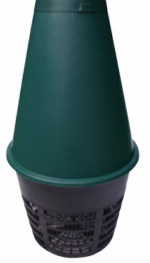 Compost digesters are designed to break down or ‘digest’ organic material that regular composters cannot. Some are the shape of an inverted cone which is partially buried in the soil. Kitchen scraps are added at the top, the unit is heated by the sun, and scraps are reduced primarily to nutrient-rich liquid which permeates the surrounding soil, providing nourishment to nearby plants.
Compost digesters are designed to break down or ‘digest’ organic material that regular composters cannot. Some are the shape of an inverted cone which is partially buried in the soil. Kitchen scraps are added at the top, the unit is heated by the sun, and scraps are reduced primarily to nutrient-rich liquid which permeates the surrounding soil, providing nourishment to nearby plants.
Central Saanich Coun. Zeb King has several digesters in his backyard. “While the CRD dithers, debates and continues to send kitchen scraps to the lower mainland at considerable cost to the taxpayer, a solution is right at hand,” says King. King has been testing two types of cones, the Green Cone and the Bard Matic. King says that he prefers the Bard Matic, because “It is simple and doesn’t require excavation to retrieve the basket at the bottom of the cone in, say, 2-3 years. All you do is pull out the cone and bury the compost gold.” Both cones sell for about $160. The Green Cones are in use at Stelly’s High School.
The Compost Education Centre of Victoria has been in the forefront of composting in the region. They have available many types of composters and digesters together with fact sheets covering their installation and use. They even have instructions for making a backyard digester out of an old plastic garbage container.
King has asked them to provide a workshop for Peninsula residents.
 For community-minded gardeners, a larger digester that is hand cranked and handles kitchen scraps from several families might be a solution. The finished product is soil for the garden that could be shared among the participating families. The SunMar 400 is just such a digester. Mr. King has been using two of them for some time and says that ‘It takes no time to decompose kitchen scraps most times of the year except the colder days of winter. For those days, the cones are best.’
For community-minded gardeners, a larger digester that is hand cranked and handles kitchen scraps from several families might be a solution. The finished product is soil for the garden that could be shared among the participating families. The SunMar 400 is just such a digester. Mr. King has been using two of them for some time and says that ‘It takes no time to decompose kitchen scraps most times of the year except the colder days of winter. For those days, the cones are best.’
In the following on-line video, he demonstrates three different types of digesters.







